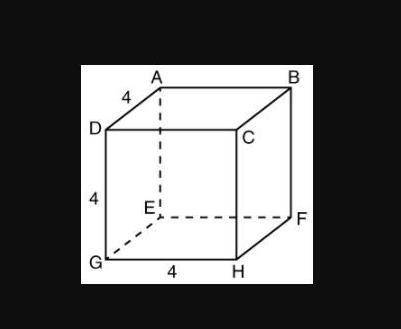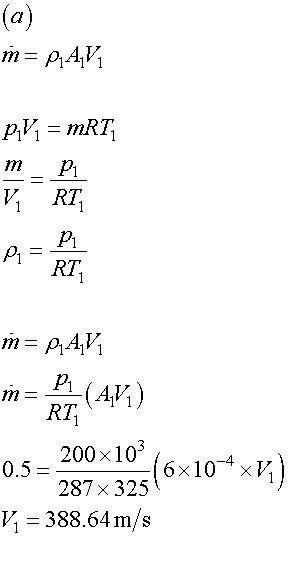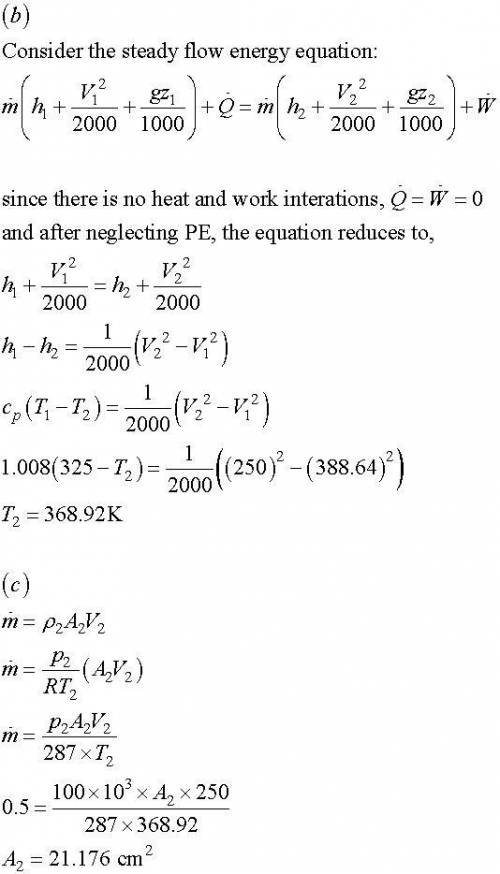 1
1 (a) Each cross section is a square whose side length is decided by the distance in the x,y plane between the two curves  and
and  , which is
, which is  . Then each cross section has area
. Then each cross section has area

(b) The volume of the solid is obtained by integrating the cross-sectional area from x = -2 to x = 2.

 1
1  , where c is the length of line AC, a is the length of line AB = 4 and b is the length of line BC = 4.
, where c is the length of line AC, a is the length of line AB = 4 and b is the length of line BC = 4.
 units and width of 4 units.
units and width of 4 units. square units.
square units. 1
1  , where c is the length of line AC, a is the length of line AB = 4 and b is the length of line BC = 4.
, where c is the length of line AC, a is the length of line AB = 4 and b is the length of line BC = 4.
 units and width of 4 units.
units and width of 4 units. square units.
square units.(a) Rectangle

Step-by-step explanation:
Given
See attachment for cube
Solving (a): Cross-section formed when lines AC and EH meets
Lines AC and EH will meet midway of lines AE and CH
So, the shape that will be formed is quadrilateral and the sides of the quadrilateral is: AE, EH, HC and CA
Where


CA is the diagonal of the top face of cube.
So:

So, we have:



Take square roots


So, we have:


The cross-section is a rectangle
Solving (b): The area of the cross-section




Solving (c): How the cross-section is determined
Copied from (a)
Lines AC and EH will meet midway of lines AE and CH
So, the shape that will be formed is quadrilateral and the sides of the quadrilateral is: AE, EH, HC and CA

 1
1 (a) Each cross section is a square whose side length is decided by the distance in the x,y plane between the two curves  and
and  , which is
, which is  . Then each cross section has area
. Then each cross section has area

(b) The volume of the solid is obtained by integrating the cross-sectional area from x = -2 to x = 2.

 1
1 Photos are attached. Step wise solution is given.
1. Velocity of air at inlet is calculated.
2.Temperature of air at exit in Kelvin is also calculated.
3.Exit Cross-Sectional area
Best Regards.


 28
28  19
19 velocity of the air at the inlet = 388.64 m/s
temperature = 368.92 K
cross-sectional area = 21.176 cm²
Explanation:
given data
pressure p1 = 200 kPa
temperature t1 = 325 K
mass flow rate n = 0.5 kg/s
inlet cross-sectional area = 6 cm²
pressure of the air = 100 kPa
velocity = 250 m/s.
cp = 1.008 kJ/kg.K
solution
as we know that
mass =  A V ..............1
A V ..............1
and
pV = nRT ..........2
so we can say
 ........3
........3
so 
n =  ..........4
..........4
put her value we get
0.5 = 
solve we get
V = 388.64 m/s
and
we apply now here steady flow energy that is
 ..........5
..........5
here no heat and work
so Q = 0 and W = 0
we get here h1 - h2 that is
h1 - h2 =  ..............6
..............6
Cp(T1-T2) = 
put here value and we get
0.008 ( 325 - T2) = 
T2 = 368.92 K
and
for Area2 we put value in equation 4
0.5 = 
solve it we get
A2 = 21.176 cm²
 19
19 
It will provide an instant answer!
